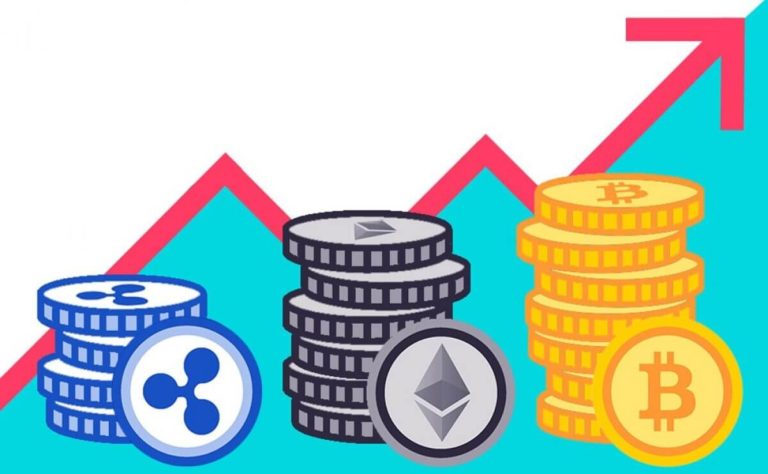How to trade Binance options (Very easily for max profit)
Looking for a down-to-earth guide on trading options on the Binance platform? Read on to discover the basics that you need to know.
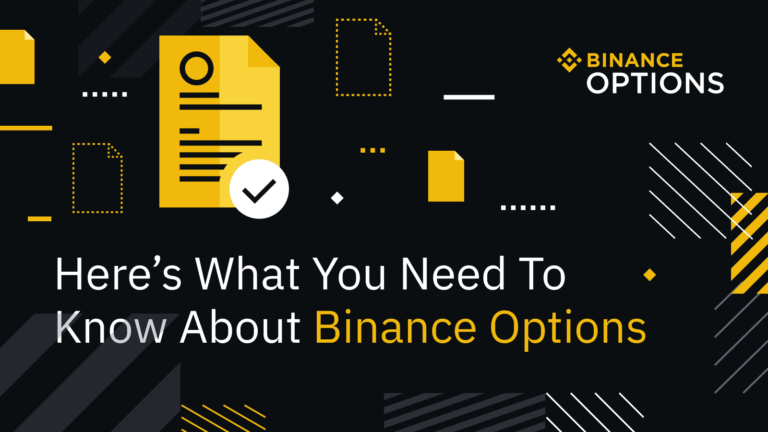
Options trading is a unique system of speculating in the financial markets. Options are contracts-for-difference derivatives with specific rules and they are available on the Binance platform.
An options trade offers more simplicity than you will get with standard spot and futures trading because everything is well laid out and there is less to manage.
The goal here is simple: Bet on the price of an asset either rising or falling between now and a fixed date. And if you win the bet, then you make some money. Else, you lose your investment.
Trading options on the Binance platform is as simple as that. This post shows you both how to do it and how to make the best of the system.
An Introduction to Binance Options
Options trading was originally like futures trading, but with a twist. When a trader from the old world bought a 3-month futures contract for corn or oil, for instance, he was obliged to pay that sum on expiry. And the seller was as well obliged to sell the commodity.
The old method of trading options additionally made it optional for the trader to pay or the seller to accept payment and release the commodities.
Fast-forward to today and options and futures trading are mostly contracts-for-difference (CFD) transactions. They are now traded as financial derivatives, which only track the price of an underlying asset. You can win or lose money, but no asset is paid for or delivered. The system is solely there for speculation.
Binance Options currently offers expiration from 5 minutes to 24 hours (1 day). It tracks the market price of five cryptocurrencies, using Binance Futures contracts.
This platform allows you to buy calls and puts using your Binance Futures trading account and wallet. The premium is deducted immediately from your account and you are free to close the contract before expiry.
Advantages of Trading Binance Options
Trading this modern type of options has its advantages and this helps to make it popular. Binance Options also has its peculiarities and they combine to make it an attractive platform for all levels of traders. If you are wondering why you should try options trading on Binance, then here are five good reasons.
- Easy to Use – The Binance Futures trading platform is a well-designed and intuitive interface, which makes it easy for even beginners to understand the process and move along without much learning. Everything is well laid out, labeled, and easy to adjust. Although most beginners may need some time, more advanced traders will find their way easily.
- Flexible System – Binance Options is a flexible system. It lets you choose expiry dates between 5 minutes, 10 minutes, 30 minutes, and so on, up to 24 hours. Secondly, unlike many platforms with rigid rules, you are free to execute your Binance Options before expiry. This feature lets you cash in anytime you feel like it, without waiting for the expiry.
- Short Duration – You can choose between different short expirations, ranging from 5 minutes to 10 minutes, 30 minutes, 1 hour, 4 hours, 8 hours, 12 hours, and 24 hours.
- High Leverage – You only have to pay a premium to trade Binance Options. And that same premium is only a fraction of the underlying asset’s price and the maximum loss you can incur. For example, the platform can only demand a 50USDT premium for an underlying asset with an over $10,000 market price.
- No Hidden Costs – There are no hidden costs included in a Binance Options contract. All possible costs are calculated into the premium that you pay for the trade and are immediately deducted from your account. This premium is the maximum loss you can incur with a Binance Options trade.
- Competitive Pricing – Binance Options’ premiums are competitively priced compared to the competition.
Binance Options vs Futures
Binance Options is based on the Binance Futures platform and even uses the same wallet. Both trading systems are derivative-based, as they are not physical assets of their own. Rather their pricing is based on the price of real-world assets like Bitcoin and other cryptocurrencies.
Both trading systems differ in a few ways. For instance, you can currently trade just six instruments on Binance Options, while Binance Futures offers over 90 tradeable instruments.
Secondly, Binance Futures lets you either buy or sell into the market. But you can only buy a Binance Options contract because Binance is the sole seller here. However, you are still free to either buy call or put options in anticipation of price increases or decreases, respectively.
Thirdly, Binance Options are currently limited to 24 hours, while you can buy perpetual Binance Futures contracts, that theoretically do not expire.
Important Terms to Note
The trading world works with lots of industry terms and language that may sound weird to the new trader. It is important, however, to understand these terms because they make your learning process and trading journey easier.
Here is a list of the most important terms to be aware of and keep in mind, as a Binance Options trader.
- Underlying Asset – The Binance Options system tracks Binance Futures’ perpetual contracts, such as the BTCUSDT and so on. But Binance Options does not offer you this asset, rather, you engage in a CFD transaction with the platform, whenever you buy a call or put option.
- CFD – A CFD is a Contract for Difference and is used to refer to instruments that are not traded directly. They are financial derivatives that are traded only for speculation. So, a CFD transaction offers nothing but either a profit or a loss.
- Put – A speculator will buy a Put option if he expects the market to move down. The market’s price will have to fall below an equal amount of the premium he paid, for the trade to be profitable.
- Call – On the other side, a speculator will buy a call option, if he expects market prices to rise by the given expiry date. The price will also have to move above the sum of the strike price and the premium, for the trade to be profitable.
- Strike Price – This is the current market price of the underlying asset at the time of placing the order. Binance will then add or subtract the premium from this price for the call and put orders respectively, to determine if the trade was a success or not. Please note that strike price may mean something entirely different on another platform.
- Premium – A premium is a price you pay to buy a Binance Options contract. It is also the highest amount you can lose in the transaction. For example, you could buy a BTCUSDT call option for $100. This $100 is the premium, and if the price does not move by at least $100 by expiry, then you lose.
- Profit – Binance first deducts the premium from your account once you buy a call or put option. Then if the market starts going in your favor, the profits are added back. There is no limit to how much profit you can theoretically make on Binance Options. But keep in mind that you will need to make more profit than you paid for the premium, to make a net profit.
- Margin – Premiums are used in options trading in place of the margins that are used in futures trading. So, generally, an options trader is not concerned with margins. But on Binance Options, the premium is deducted from the Futures trading account. So, you need to take care if you have open futures contracts and are about to buy options contracts. Because an over-leveraged account might trigger a margin call.
How to Trade Binance Options
Here is a step-by-step guide to start trading options on Binance.
Step 1: Open a Binance account
Open a Binance account and activate it, if you haven’t already.
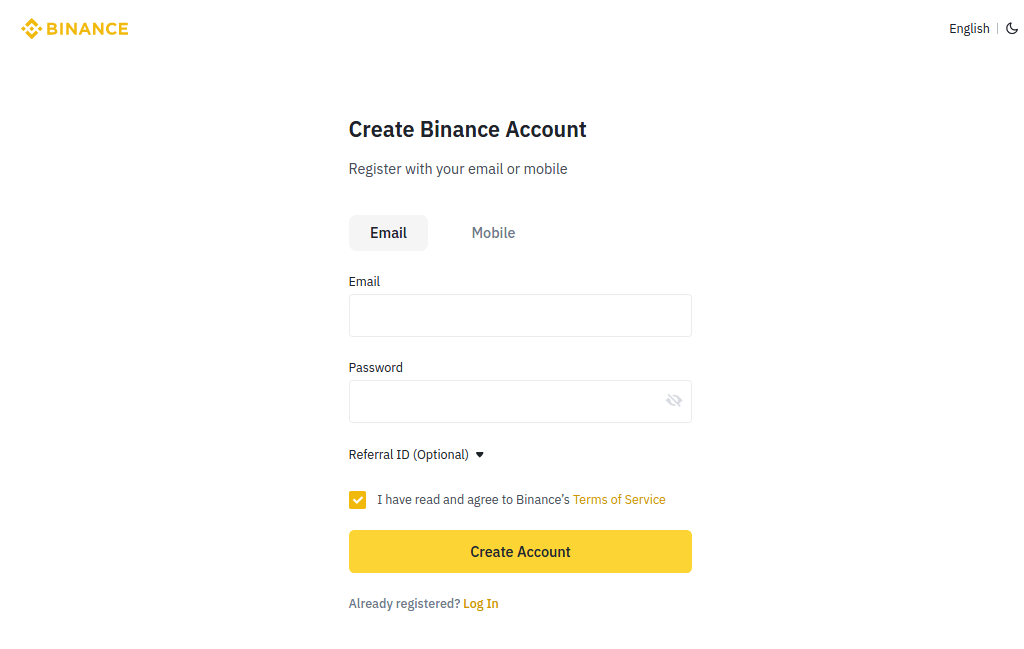
Step 2: Open futures account
Open a futures trading account. You will have to choose between a USD-M or COIN-M contract to proceed to the platform. Then click on ‘Open Futures Account’ and answer the short quiz.
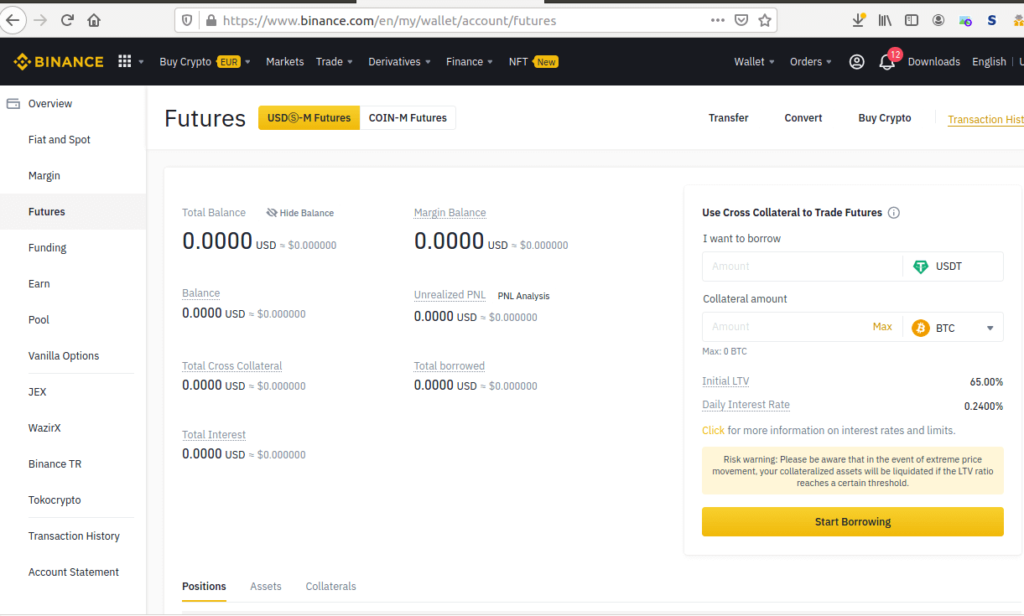
Step 3: Fund your account
Fund your futures trading account.
Step 4: Download the app
Choose and download your Binance app. Note that Binance Options is currently only available on the app, although it is expected on the web version soon. The app is available for Windows, macOS, Linux, Android, and iOS devices.
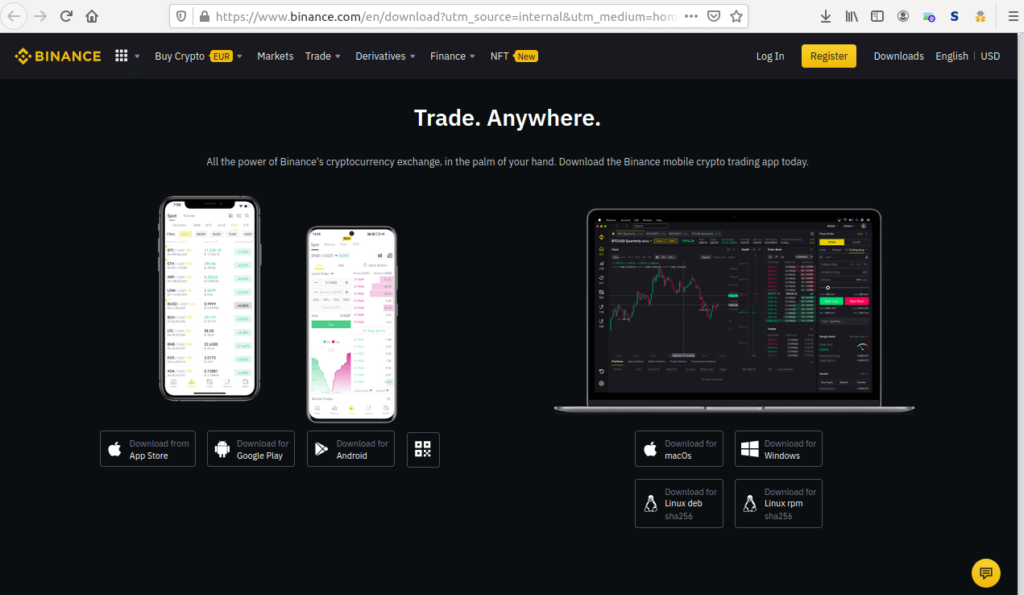
Once you are on the app, click on the ‘Trades’ tab for options trading.
Step 6: Pick duration
Select the duration from 5 minutes to 1 day.
Step 7: Buy
Choose to buy a call or a put option.
Step 8: Adjust
Adjust quantity, if necessary.
Step 9: Inspect
Inspect the strike price, premium, and any other details displayed.
Step 10: Confirm
Click on ‘Confirm’ to enter the trade. Your trade is now live and you can either choose to monitor it manually from the ‘Positions’ tab or leave it to expire on its own.
Symbols Available
Binance currently offers six symbols on its options platform. These symbols track the market prices of some of the most popular cryptocurrencies against Tether, the USDT coin on the Binance Futures platform.
Binance Options also comes with a minimum and maximum contract size for the different coins involved. They are as follows:
- BTCUSDT – The Bitcoin/Tether pair: 0.001 BTC minimum and 20 BTC maximum.
- ETHUSDT – The Ethereum/Tether pair: 0.001 ETH minimum and 200 ETH maximum.
- LTCUSDT – The Litecoin/Tether pair: 0.001 LTC minimum and 20 LTC maximum.
- XRPUSDT – The Ripple/Tether pair: 0.1 XRP minimum and 200,000 XRP maximum.
- BNBUSDT – The Binance Coin/Tether pair: 0.01 BNB minimum and 2,000 BNB maximum.
- LINKUSDT – The Chainlink/Tether pair: 0.01 LINK minimum and 2,000 LINK maximum.
Conclusion
We have reached the end of this short guide on easily trading Binance Options for maximum profits. And you have seen how simple the platform is, as well as noted all the important terms and concepts.
It is now up to you to analyze your personality and determine if options or futures trading is the best for you.


